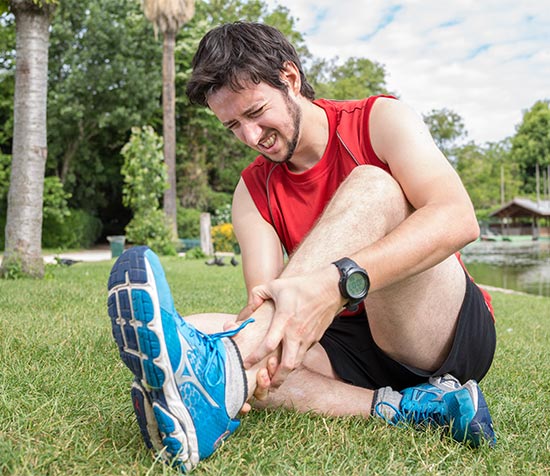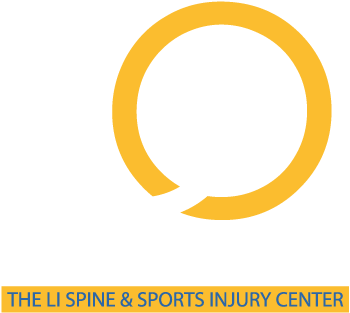Soft Tissue Injuries
A.R.T. (Active Release Techniques)
For more than 30 years, Active Release Techniques (ART®) have been successfully used in treating soft tissue injuries. Soft tissue injuries are very common in accidents and sports injuries and include injuries to the muscles, ligaments, tendons, nerves, and fascia. When soft tissue injuries are left untreated scar tissue adhesions can accumulate. Injuries to your soft tissue, in addition to being painful, can cause a loss of stability in the damaged area, loss of flexibility and movement, and negatively affect your balance. Active Release Techniques are very effective in locating the scar tissue adhesions, breaking them up, and restoring normal flexibility and movement to the injured area.
An auto accident, or a traumatic injury, can cause immediate pain and major damage to the soft tissues in the body. When this happens, the body needs corrective assistance (in the form of adjustments, physical therapy, proper stretches, and exercises) to make sure your body heals correctly, and the muscles, tendons and ligaments are restored to normal flexibility and function.
 Soft tissue injuries, while common from auto accidents and sports injuries, can also develop from excessive or repetitive use in various sports and occupations. For example, prolonged sitting, without proper movement and stretching, can cause muscles and ligaments to shorten, leading to strains and imbalances in the muscles of the hips. Over time, strains develop into micro-trauma, which is small-scale damage to the muscles, tendons, ligaments, and joint capsules in response to the stress. High impact movements, such as movements in golf, tennis, and baseball can with repetition create micro-trauma as well.
Soft tissue injuries, while common from auto accidents and sports injuries, can also develop from excessive or repetitive use in various sports and occupations. For example, prolonged sitting, without proper movement and stretching, can cause muscles and ligaments to shorten, leading to strains and imbalances in the muscles of the hips. Over time, strains develop into micro-trauma, which is small-scale damage to the muscles, tendons, ligaments, and joint capsules in response to the stress. High impact movements, such as movements in golf, tennis, and baseball can with repetition create micro-trauma as well.
As your body tries to heal micro-trauma strains and injuries, your body will create new tissue to repair the damaged tissue. This is a normal, and necessary, part of healing. Bodybuilders are masters of allowing this process to build, strengthen, and shape their muscles. The problem ensues when scar tissue adhesions develop from the repeated damage to, tearing of, and rebuilding of the muscles. Scar tissue adhesions will affect the health and function of the muscles and related joints, the symptoms of which include: pain, tightness, stiffness, diminished blood flow, and limited or restrictive joint movement. When muscles become tight and adhesions start to develop, the nerves can actually become “stuck” on the surrounding muscles, causing the nerves to be stretched instead of easily sliding against the movement of the muscles. This causes the nerves to become irritated, which in turn results in pain. Over time, if not corrected, this will get worse.
Treating Soft Tissue Injuries
Traditionally, soft tissue injuries have been treated with muscles relaxants, anti-inflammatory medications, rest, heat, ice, ultrasound, traction, massage, acupuncture, joint manipulation, stretching, and strengthening exercises. Often, these approaches will only provide temporary relief because they fail to deal with the underlying cause — scar tissue adhesions. Passive approaches, such as muscle relaxants and anti-inflammatory medications, rest, ice, ultrasound, and acupuncture, all focus on providing relief to your symptoms but do nothing to address adhesion formation and muscle restrictions. Active approaches, such as joint manipulation, stretching and exercises are often necessary to provide complete rehabilitation of your injury and to restore full strength and function to your muscles. But, even active approaches are not as effective as they could be and will be much slower to provide relief and recovery if the scar tissue adhesions aren’t dealt with.
Active Release Techniques uses different methods to successfully treat:
- Soft tissue injuries
- Sciatica,
- Back pain,
- Neck pain,
- Shoulder pain,
- Sprains and strains,
- Pinched nerves,
- Ligament injuries,
- Tendonitis,
- Plantar fasciitis,
- Muscle pain,
- Fibromyalgia,
- Thoracic outlet syndrome,
- Headaches,
- Herniated disc pain,
- Numbness & tingling,
- And many others
One of the great things about Active Release Techniques is how quickly it is able to restore normal range and function to soft tissue injuries. This is why many professional sports teams and elite athletes have ART practitioners on staff.
Long Island Spine & Sports Injury Center uses Active Release Techniques
Dr. Olson, in addition to being a Doctor of Chiropractic, has been treating soft tissue injuries using ART for almost 20 years. Active Release Techniques can be considered a type of active massage. As a highly trained ART practitioner, Dr. Olson is able to detect whether the soft tissue areas are healthy, or have scar tissue that needs further treatment. Soft tissue injuries can affect the spinal areas too when the muscles and ligaments surrounding the spine are pulling and/or putting pressure on the vertebrae, causing subluxations (misalignments) to the spine and putting pressure on the nerves that are exiting the spine. Combining chiropractic care and Active Release Techniques allows Dr. Olson to discover the underlying cause of your problem, correct it, and restore normal movement to the muscles, tendons, ligaments, and vertebrae.
Dr. Gary Olson has been certified in the following Active Release Techniques courses: Master ART Course, Spine, Manipulation under Anesthesia, Full Body, Full Body Level 1, Kinesio Taping, Upper Extremity, Lower Extremity, Nerve Entrapment.
If you are dealing with soft tissue injuries as the result of an accident, sports injury, or repetitive stress injury, please contact Dr. Gary Olson at his office, 631.462.0917, and arrange for an appointment to assess the severity of your injury. If you have found this article informative, please share it with your friends and family.
© 2017-18 Dr. Gary Olson DC, PC, The Long Island Spine & Sports Injury Center
These articles are the property of Dr. Gray Olson DC, PC. They may not be reused without permission. You are welcome to link to this article. Dr. Gary Olson has been proudly serving Long Island, NY since 1999.
The contents of this website are based upon the opinions and experience of Dr. Olson. The information on this site is not intended as medical advice. The information contained on this website is a sharing of knowledge based on the experience, training, and research of Dr. Olson. Dr. Olson recommends that patients make their health care decisions after doing their research and consulting with a qualified health care professional.
Contact us at 631.462.0917 to set an appointment.


